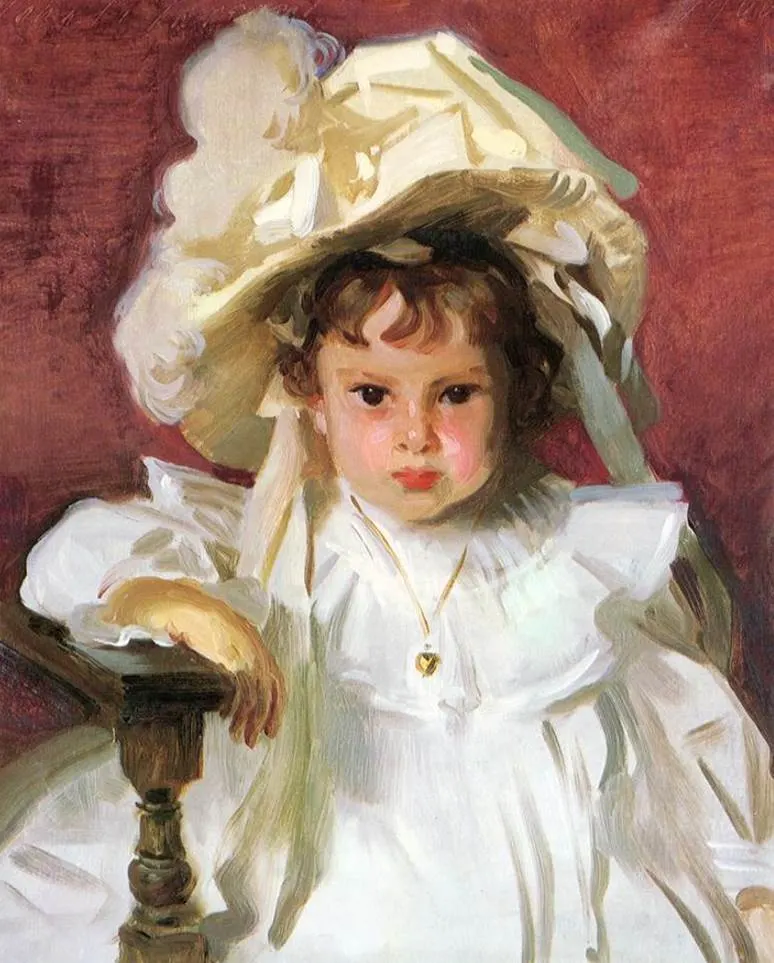This popular museum in Texas might not be housed in the prettiest building in the country, but it surely holds a remarkable collection of fine art.
The Dallas Museum of Art was established in 1903 as part of the Dallas Art Association. The first exhibitions of paintings were displayed at the Dallas Public Library.
The permanent collection of the museum gradually grew and by 1932, a decision was made to move to a new Art Deco building at Fair Park.
The move was completed in 1936 during the Texas Centennial Exposition and it was known as the Dallas Museum of Fine Arts by then.
The facility became too small once again when the Dallas Museum of Fine Arts merged with the Dallas Museum of Contemporary Art.
The current building of the museum in downtown Dallas was completed in 1984 for $54 million. The official slogan was “A Great City Deserves a Great Museum.”
Today, the DMA houses a collection of over 24,000 items, ranging from the 3rd Millennium B.C. to modern times.
In this article, you’ll discover some of the most famous paintings at the Dallas Museum of Art.
1. The Icebergs – Frederic Edwin Church
- Date created: 1861
- Dimensions: 163.8 x 285.7 centimeters (64.5 x 112.5 inches)
The Icebergs is a huge painting by Frederic Edwin Church (1826-1900), an American artist who is best known for his landscapes. He was inspired to paint this work after a trip to the North Atlantic in 1859. He visited the region of Newfoundland and Labrador, the easternmost province of Canada.

Although the painting looks a bit gloomy, the remarkable lighting reveals that this is an afternoon scene in the Arctic. The painting was an instant success when it was displayed at a one-painting exhibition in New York City. It remains one of the most fascinating paintings in Church’s oeuvre today (and that means a lot).

2. Diana and Apollo Attacking Niobe’s Children – Jacques-Louis David
- Date created: 1772
- Dimensions: 120.6 x 153.6 centimeters (47.5 x 60.5 inches)
Diana and Apollo Attacking Niobe’s Children is a painting by Jacques-Louis David (1748-1825), a French artist who became one of the leading Neoclassical painters of his generation. It depicts Niobe, the queen of Thebes, who protects her daughter from arrows shot by Apollo and Diana.
The mythological painting was the second attempt by David to win the Grand Prix of Rome, the prestigious award which would have allowed him to study in Rome. He spent a lot of time and effort on this painting, so the disappointment of losing once again resulted in lifelong resentment for the French Royal Academy.

3. Fox in the Snow – Gustave Courbet
- Date created: 1860
- Dimensions: 85.7 x 127.9 centimeters (33.7 x 50.3 inches)
Fox in the Snow is a painting by Gustave Courbet (1819-1877), the leading French Realism artist of the 19th century. It depicts a fox that just caught a rodent and the painting graphically depicts the prey being devoured by the wild animal.
This painting emphasizes why Courbet produced some of the most famous Realism paintings in history. He only painted what he could see and the red blood of the rodent splashed onto the white snow is a clear example of this. It was displayed at the Paris Salon of 1861 and was received well by art critics.
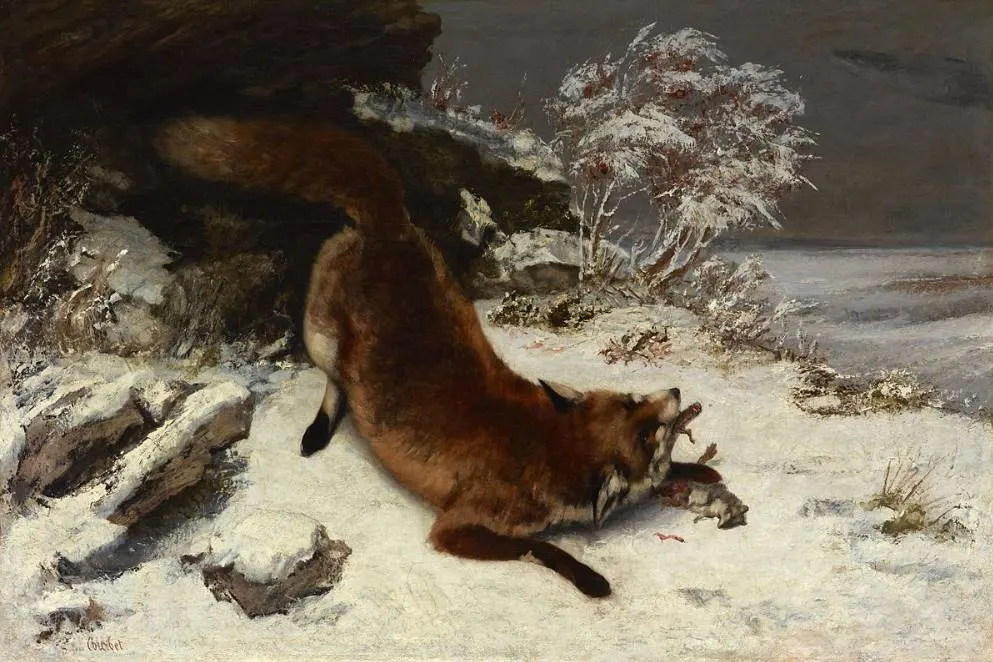
4. Lighthouse Hill – Edward Hopper
- Date created: 1927
- Dimensions: 73.82 x 102.23 centimeters (29.06 x 40.25 inches)
Lighthouse Hill is a painting by American Realism artist Edward Hopper (1882-1967), a man who struggled to achieve his artistic breakthrough during the first two decades of the 20th century. This painting was completed shortly after he got married and his first paintings were exhibited.
He completed two paintings depicting the Two Lights lighthouse in Cape Elizabeth, Maine, during the late 1920s. The simplicity of this painting and the clear play of light and shadow makes it one of the most mystifying paintings in Hopper’s oeuvre.
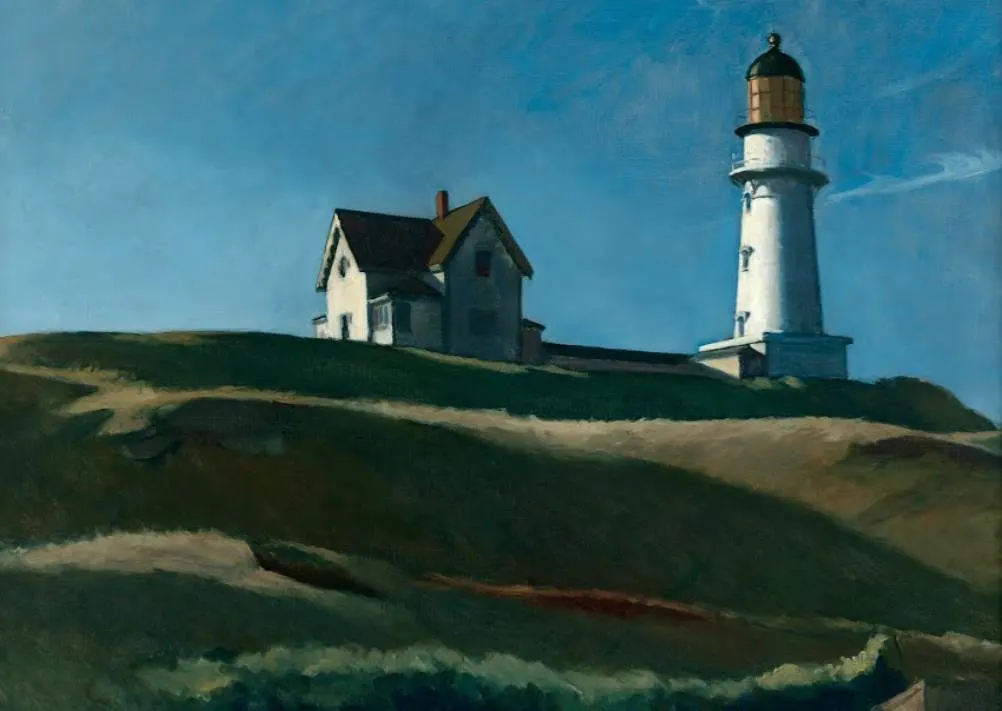
5. Water Lilies – Claude Monet
- Date created: 1908
- Dimensions: 80 centimeters (30.5 inches) in diameter
Water Lilies is the title of a large series of paintings by French Impressionist artist Claude Monet (1840-1926). They depict the water lilies that grew in the pond of his house in Giverny, the place where he lived and worked during the final decades of his life.
He moved to this house in 1883 and continued to develop his large garden until the day he died. Her, he found an abundance of subject matter to painting his Impressionist paintings. The pond in his garden was created from a small tributary of the Epte River. Many of the paintings in this series depict the surface of the water and nothing more.
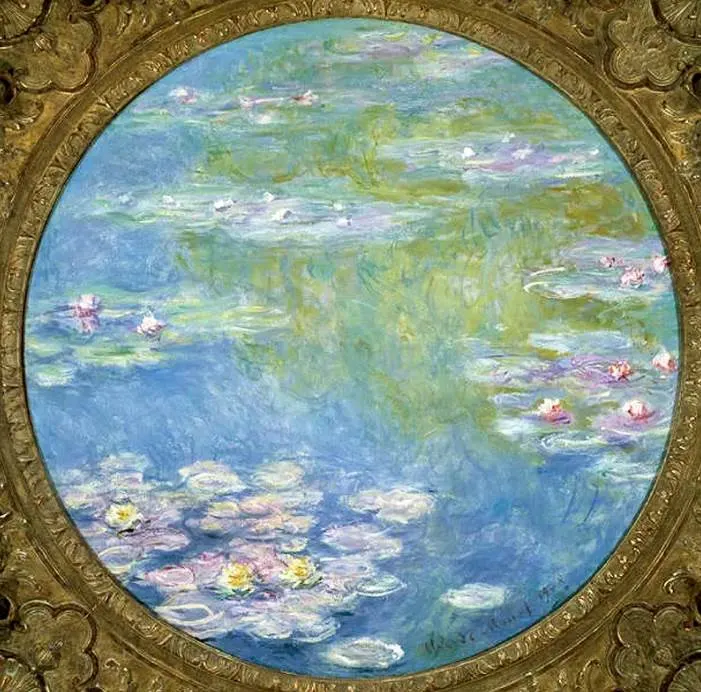
6. The Fountain of Vaucluse – Thomas Cole
- Date created: 1841
- Dimensions: 75.26 x 124.77 centimeters (69 x 49.12 inches)
The Fountain of Vaucluse is a remarkable painting by Thomas Cole (1801-1848), the English-born American artist who became the founding father of the Hudson River School. He completed this work in the early 1840s during his second trip to Europe.
His first trip to Europe was in the early 1830s and he traveled all across Italy. This is reflected in the architectural elements in many of his works. This painting depicts a scene at Vaucluse when he visited the house of Petrarch, a 14th-century poet. He initially included the poet in the illuminated space in the foreground but later changed his mind.
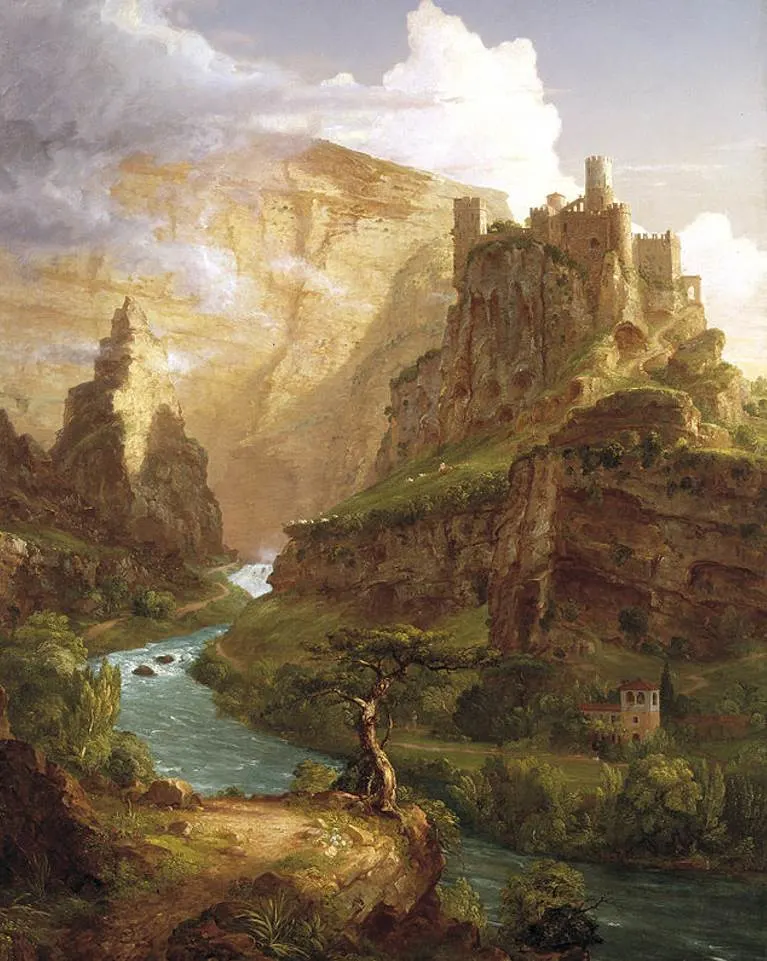
7. Oedipus at Colonus – Jean-Antoine-Théodore Giroust
- Date created: 1788
- Dimensions: 163.83 × 196.85 centimeters (64.5 × 77.5 inches)
Oedipus at Colonus is a painting by Jean-Antoine-Théodore Giroust (1753-1817), a Neoclassical artist who was extremely successful before the French Revolution. His career, however, abruptly ended when the revolution broke out and he didn’t agree with the ideals of the new regime.
This is one of Giroust’s most famous paintings and was completed in the year before the revolution broke out. It depicts a scene from a play with the same name and depicts the blind king Oedipus who is resting at Colonus. His son Polynices and daughters Antigone and Ismene beg him to return to Thebes. The use of color in this painting emphasizes the incredible talent of the French artist.
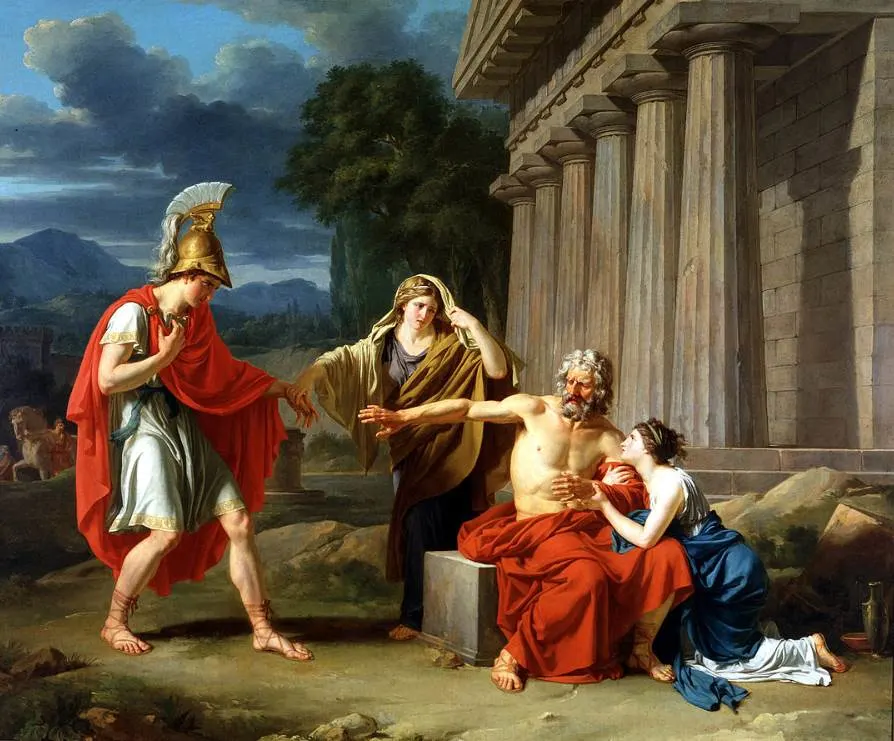
8. The Abduction of Europa – Jean-Baptiste Marie Pierre
- Date created: 1750
- Dimensions: 240.4 × 274.4 centimeters (94.6 × 108 inches)
The Abduction of Europa is a monumental mythological painting by Jean-Baptiste Marie Pierre (1714-1789). He is the man who replaced François Boucher (1703-1770) as the first Painter of King Louis XV during the final years of the Ancient Régime in France.
He also became the Director of the French Academy of Painting and managed to secure numerous commissions in this position. This work was commissioned by a rich art patron named Claude-Henri Watelet and depicts the story from Ovid’s poem which explains how Jupiter disguised himself as a bull to abduct Europa.
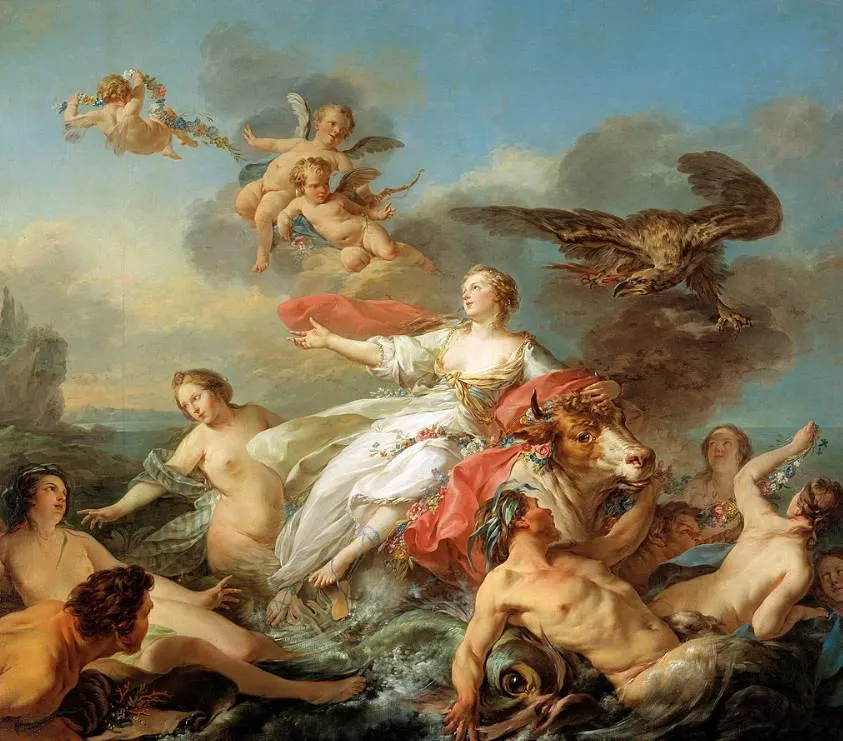
9. Drouth Stricken Area – Alexandre Hogue
- Date created: 1934
- Dimensions: 76.2 x 107.31 centimeters (30 x 42.25 inches)
Drouth Stricken Area is a painting by Alexandre Hogue (1898-1994), one of the members of a group of artists known as the Dallas Nine. He was active between the 1930s and 1960s and most of his works depict scenes in the Southwestern United States
His main focus was paintings that reflect the so-called Dust Bowl, a period in which severe dust storms took place in this region. Drouth Stricken Area, a title that is purposely misspelled, is one of his erosion series that highlights the effects of these natural events.
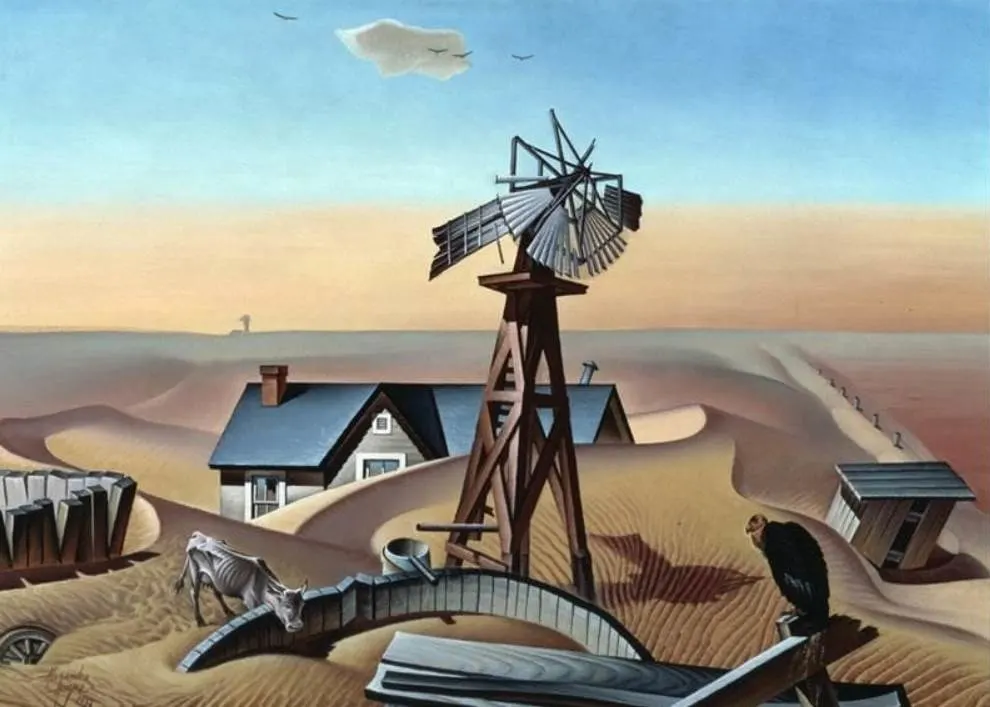
10. Dorothy – John Singer Sargent
- Date created: 1900
- Dimensions: 61 x 50 centimeters (24 x 19.6 inches)
Dorothy is the title of a painting by American artist John Singer Sargent (1856-1925). He spent most of his artistic career abroad and painted this work when he was already a celebrated portraitist of upper-class people in many parts of the world.
This painting depicts Dorothy Williamson, the granddaughter of George Millar Williamson, a man who was one of Sargent’s most important patrons. It was exhibited for the first time at the Society of American Artists in New York City in 1901 and became one of the greatest sensations of the exhibition.
